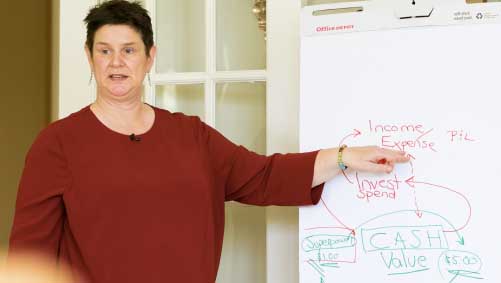
Emergency Fund Planning: A CFO’s Guide to Financial Resilience
In the unpredictable world of small business, preparing for unforeseen financial challenges is not just smart—it’s essential.
Creating an emergency fund might seem daunting—maybe even a little counterintuitive when there are so many other areas in your business crying out for investment.
But let me share a secret with you:
This fund is the difference between making it through the low-cash months and being forced to close your doors.
This guide is designed to walk you through the steps of creating and managing an emergency fund that can help your business navigate through tough times.
From figuring out how much you really need to save, to finding smart ways to grow your fund without stifling your business’s growth, I’m here to show you how to build that financial buffer.
Because when the next storm hits—and it will—you’ll want to have a safety net.
Understanding the Importance of an Emergency Fund
Simply put, an emergency fund acts as a financial safety net designed to cover unexpected expenses or financial downturns without disrupting your business operations.
Whether it’s an unforeseen repair, a sudden drop in sales, or a global economic downturn (*cough cough* COVID-19), having an emergency reserve can be the difference between staying open and going under.
Yes, seriously.
Assess Your Risk
Begin by evaluating the potential risks your business faces and the impact they could have on your finances.
The level and types of risks your business faces can vary significantly based on your industry, location, and business model.
Here’s how this assessment might look across different professions:
- For retail business owners, inventory damage or loss is a significant risk. Natural disasters, such as floods or earthquakes, can destroy physical stock. Theft is another risk factor, particularly in high-traffic areas. Additionally, retail businesses must consider the risk of economic downturns, which can reduce consumer spending and impact sales dramatically.
- Example: A boutique clothing store in a coastal area might need a larger emergency fund to cover the potential loss of inventory due to hurricane damage, alongside having a buffer for off-season sales slumps.
- Restaurant owners face unique risks, including food spoilage, equipment breakdown, and fluctuating food costs. Health inspections can also pose a risk if a restaurant is temporarily shut down for violations. The COVID-19 pandemic highlighted another significant risk: the impact of public health crises on dine-in services.
- Example: A restaurant that relies heavily on fresh produce might need a substantial emergency fund to cover sudden spikes in food prices or replace a critical piece of kitchen equipment that fails unexpectedly.
- Freelancers and consultants often face income variability and client concentration risk, as losing even ONE major client can significantly impact their revenue. Additionally, they must consider the risk of delayed payments and project cancellations.
- Example: A freelance graphic designer with a few key clients might need an emergency fund to cover living and business expenses in case a major project is canceled or a client delays payment.
- Manufacturing businesses must consider the risks associated with equipment failure, supply chain disruptions, and changes in commodity prices. A breakdown of manufacturing equipment can halt production, delay orders, and therefore lose revenue.
- Example: A small manufacturer of eco-friendly packaging might need an emergency fund to deal with potential disruptions in the supply of raw materials or to repair specialized production equipment.
- Tech startups often face the risk of rapid technological changes and competition making existing products obsolete. They also face risks related to cybersecurity threats and data breaches.
- Example: A tech startup focusing on mobile app development might need an emergency fund to pivot quickly if a competitor releases a similar, more popular app or to recover from a cybersecurity breach that compromises user data.
- Service providers face risks such as changes in consumer trends, new regulations, and the physical risk of workplace accidents or injuries. Additionally, the recent pandemic showed how susceptible these businesses are to lockdowns and restrictions on the number of clients they can serve.
- Example: A beauty salon might need an emergency fund to cover expenses during a forced closure due to a health pandemic or to adapt to new beauty trends by investing in training or equipment.
It’s clear that building an emergency fund is not a one-size-fits-all endeavor.
Each business, with its unique challenges and vulnerabilities, requires a tailored approach to financial resilience.
Whether you’re a boutique store bracing against natural disasters or a tech startup navigating the fast-paced world of innovation, the need for a safety net is universal.
In Part 1 of our guide, we’ve laid the groundwork for understanding the “why” and “what” of emergency funds.
Stay tuned for Part 2, where we’ll dive deeper into the “how”—specifically, calculating the right amount for your fund, strategies for accumulating these reserves, and tips for managing your fund effectively.
Together, we’ll ensure that your business isn’t just surviving, but thriving, ready to face whatever the future holds with confidence.

Author, Virtual CFO, and Finance Coach
“Your First CFO: The Accounting Cure for Small Business Owners” on AMAZON





